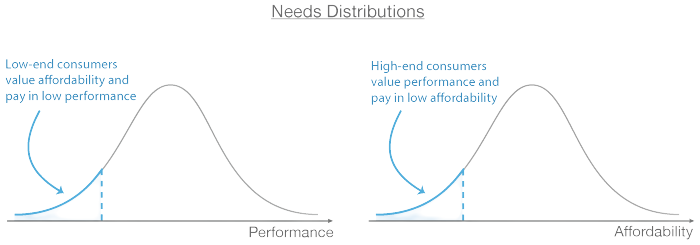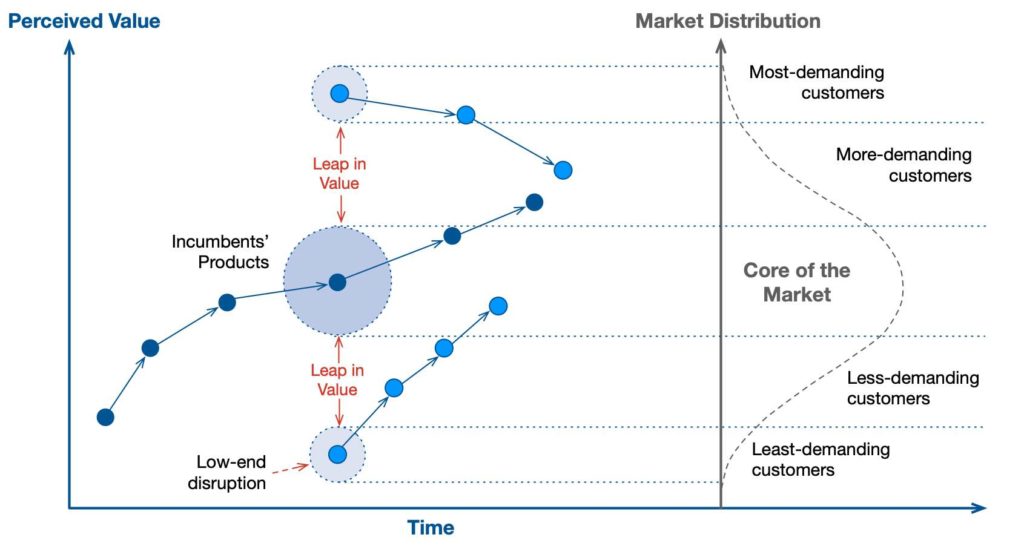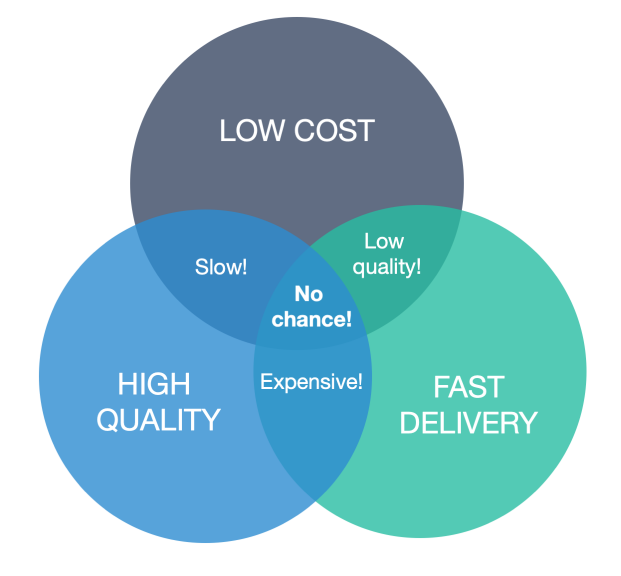Trying to be the cheapest is a race to the bottom. Someone can always make it or sell it cheaper; forcing you to lower costs and/or quality. But premium positioning can create a lasting demand and even lust for your product.

In low-end disruption, consumers are price-choosers and performance-takers: they choose their desired price level and receive the corresponding performance. In high-end disruption, consumers are performance-choosers and price-takers: they choose their desired level of performance and pay the corresponding price.

Luxury vs mass market
Creating a luxury, high-end product requires finesse and finance. You need to cultivate market influencers, seek endorsements, and cater to the media. And of course your product must meet or exceed the expectations of the premium buyer. This all takes lots of money and effort. But if you’re able to connect the dots you’ll create a self sustaining demand for a premium priced product that offers very high margins.
Or, you can play the race to the bottom game, and try to make your money on volume. The entry costs are lower; you’re usually entering a mature market, and you’re competing on price - and probably selling to the masses. But while all these factors can come together to provide quick, easy profits your advantage is always just one cheaper competitor from collapse.
The high-end is sustainable
If you go high-end, you can create and sustain a healthy margin and market. Higher profits allow you to spend more on marketing which can create more prestige and cultivate demand. Controlled scarcity via limited manufacturing can keep prices and demand high. There are perils of course. Fashion or tastes can change or new technologies or market disrupters can wreak havoc. But generally, if you can establish your product or brand as high-end and premium and you consistently deliver you can remain on top.
The low-end is not a long-term strategy
Aside from some very limited niches or industries offering a low-priced alternative or knock-off isn’t a long-term game. You can have quick, lucrative success, but others will quickly follow and cause a race to the bottom. Or worse, the market or consumer tastes will shift and you’ll be left with a warehouse full of stuff nobody wants.
As we said at the start, someone can always build it cheaper, but if you’re the leader in the market then you’re creating the demand; you define the market. And at the high-end you’re what everyone lusts for and what the low-end guys hope to be some day. Don’t get me wrong, the high-end isn’t without competition nor is it unassailable - but if managed deftly the high-end can be cultivated for generations while the low-end is lucky to be fruitful for a decade.






